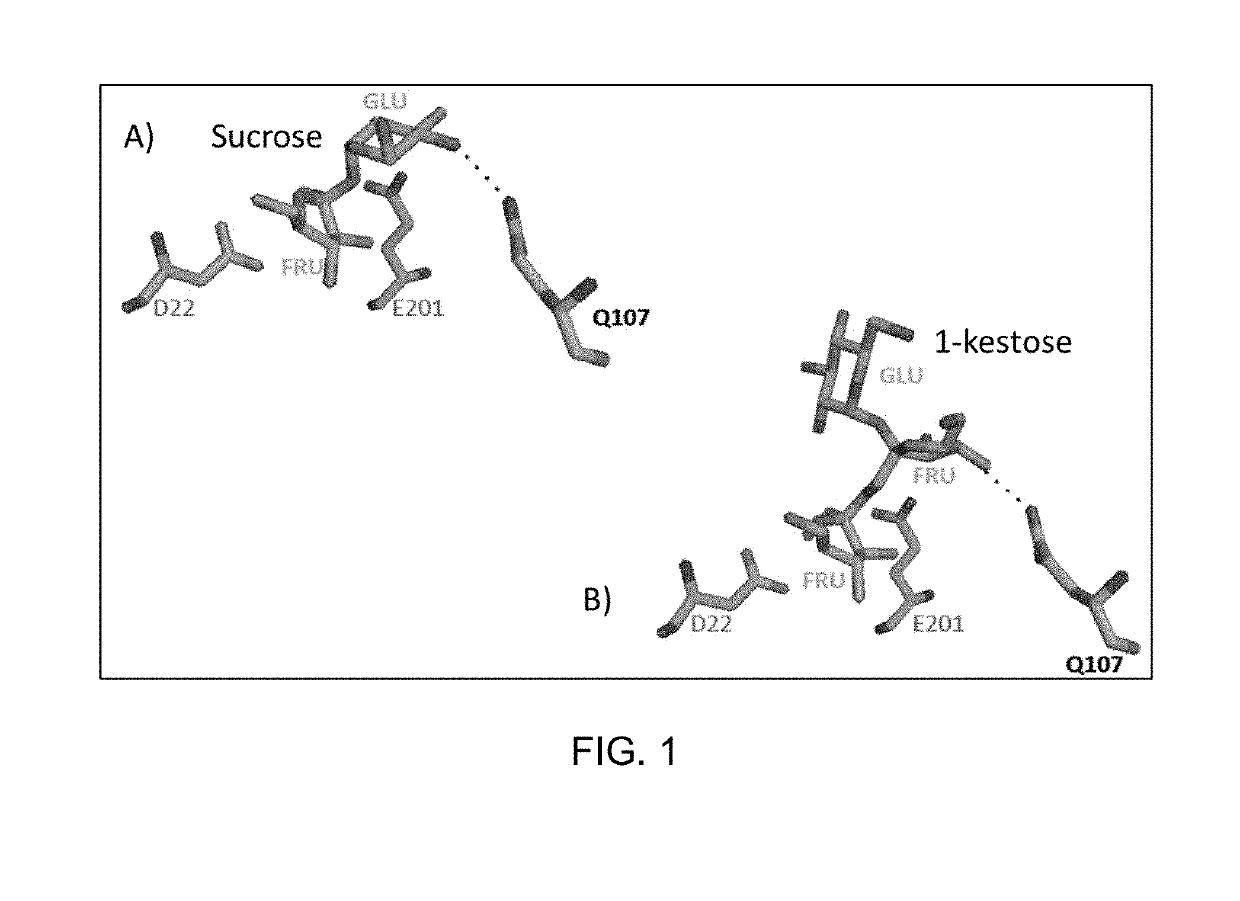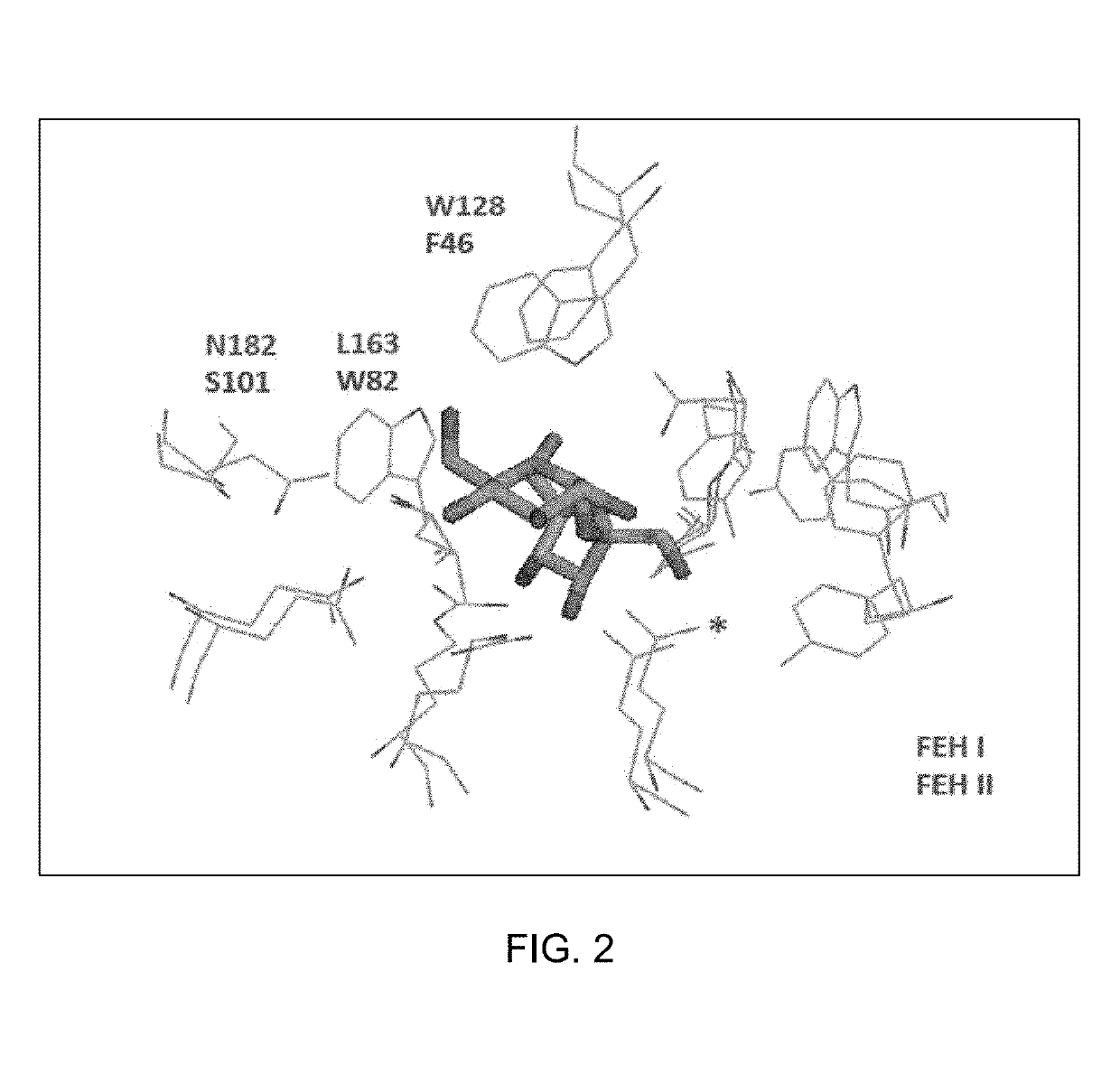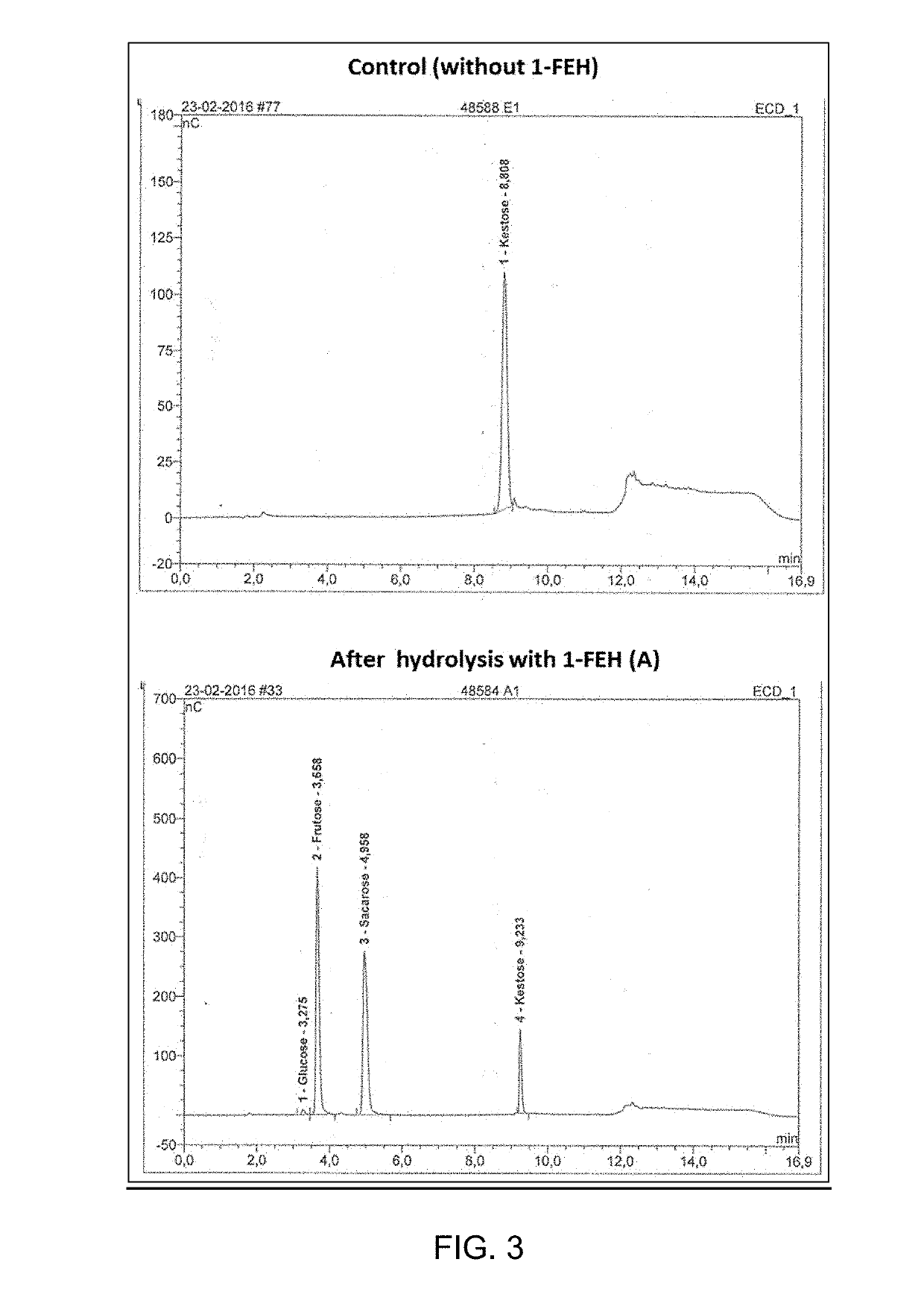Polypeptides having hydrolytic activity on 1-kestose in the presence of sucrose but lacking sucrase (invertase) activity, polynucleotides encoding same and methods of producting and using same in industrial sucrose production from 1-kestose
a technology of hydrolytic activity and polypeptides, which is applied in the field of polypeptides having hydrolytic activity on 1-kestose in the presence, and can solve the problems of reducing factory capacity, increasing energy costs, and reducing industrial sugar production, and achieves the effect of efficient, advantageous and economically viable industrial processes
- Summary
- Abstract
- Description
- Claims
- Application Information
AI Technical Summary
Benefits of technology
Problems solved by technology
Method used
Image
Examples
example —
EXAMPLE—RESULTS
[0051]As a proof-of-concept, four kestose hydrolase targets were selected, cloned, expressed in Pichia pastoris and tested for hydrolysis of 1-kestose to sucrose and fructose, in the presence of sucrose. The targets, depicted in Table 4, comprise one wild type 1-FEH from Campanula rapunculoides, mutated versions of 1-FEH w1 and w1 from Triticum aestivum and a mutated version of 1-FEH IIa from Cichorium intybus.
[0052]Targets B, C and D from Table 4 are described in the literature as strongly inhibited by sucrose (Verhaest et al. 2007; Van Den Ende et al. 2003). In order to obtain enzymes able to hydrolyze 1-kestose in the presence of high amounts of sucrose (e.g. 380 mM) point mutations were performed to substitute W82 homologue Tryptophan residue present within the GSAT region for a Leucine residue. These substitutions are supposed to decrease the interaction of glucosyl moiety of sucrose to the active site of the enzymes, leading to destabilization of sucrose binding...
PUM
| Property | Measurement | Unit |
|---|---|---|
| concentration | aaaaa | aaaaa |
| v/v | aaaaa | aaaaa |
| concentration | aaaaa | aaaaa |
Abstract
Description
Claims
Application Information
 Login to View More
Login to View More - R&D
- Intellectual Property
- Life Sciences
- Materials
- Tech Scout
- Unparalleled Data Quality
- Higher Quality Content
- 60% Fewer Hallucinations
Browse by: Latest US Patents, China's latest patents, Technical Efficacy Thesaurus, Application Domain, Technology Topic, Popular Technical Reports.
© 2025 PatSnap. All rights reserved.Legal|Privacy policy|Modern Slavery Act Transparency Statement|Sitemap|About US| Contact US: help@patsnap.com



